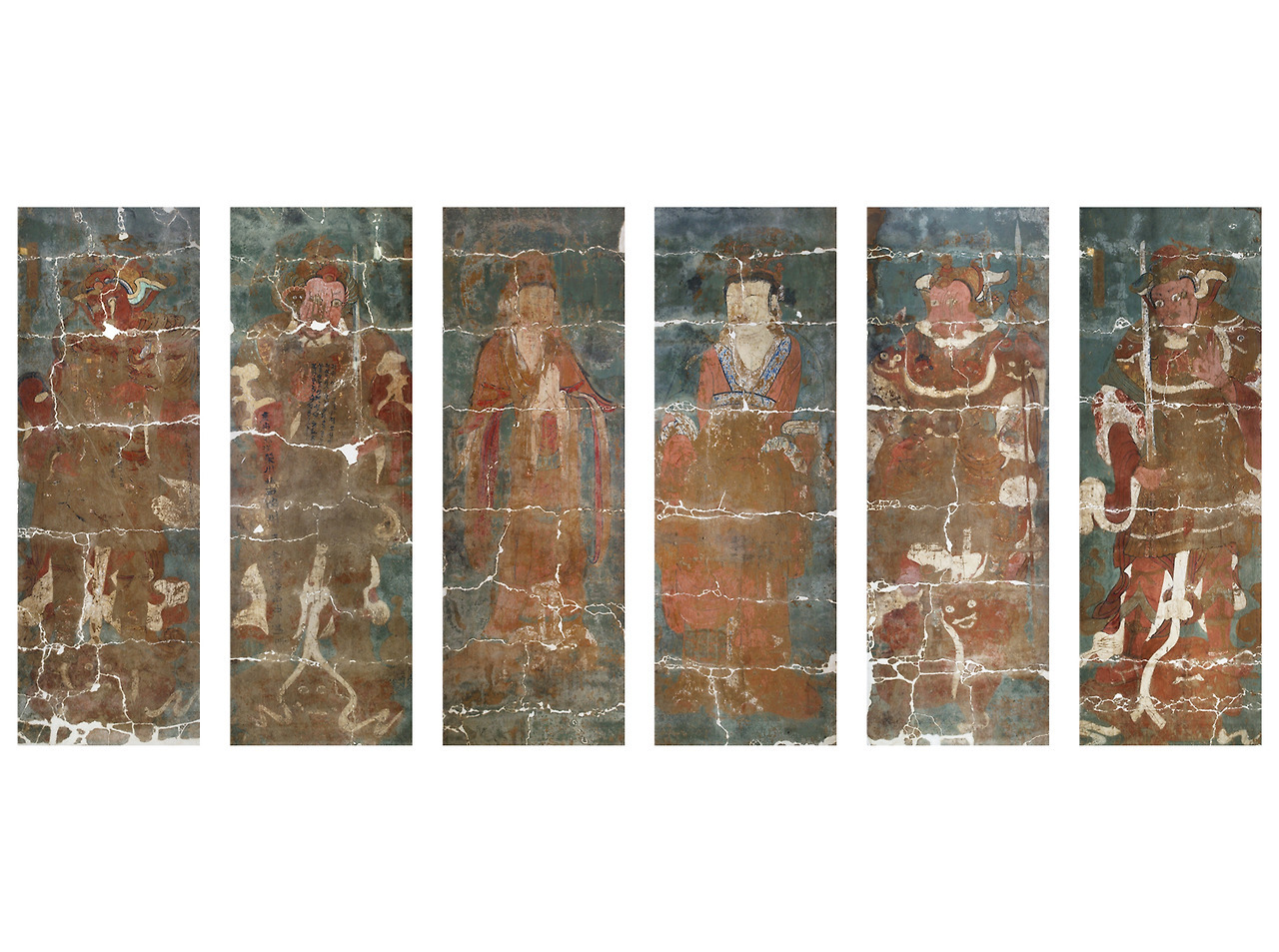Stories of Korea’s National Treasures 46

Photo Credit : Cultural Heritage Administration of Korea
Wall Paintings of Josadang Hall, Buseoksa Temple
(Yeongju, Gyeongsangbuk-do)
🏯 1. Colors That Whisper Across a Thousand Years
Hidden within the quiet Josadang Hall of Buseoksa Temple are ancient wall paintings — silent witnesses to Korea’s early Buddhist artistry.
Created during the late Goryeo to early Joseon period (14th–15th century), these murals depict deities, guardians, and celestial beings rendered with delicate brushstrokes and restrained elegance.
Though time has faded their pigments, their spirit endures — glowing softly beneath centuries of prayer and incense.
The paintings are among the oldest surviving examples of Buddhist mural art in Korea, offering a rare glimpse into the sacred imagery that once adorned temple interiors.
🪨 2. Artistic Style and Composition
The murals cover the interior walls of Josadang Hall, where the revered monk Uisang, founder of Buseoksa, is enshrined.
They are executed in mineral pigments on earthen plaster, combining deep reds, subtle greens, and gold tones that once shimmered in candlelight.
The composition centers around Buddhist guardians and celestial beings who protect the Dharma and guide believers toward enlightenment.
Their robes flutter lightly as if moved by spiritual wind, while their calm yet resolute expressions reveal both compassion and vigilance.
The line work is fine and rhythmic, showing the influence of Goryeo Buddhist painting, yet it also anticipates the more grounded and humanistic style of early Joseon art.
Each figure seems both divine and approachable — an embodiment of faith brought to life through color.
🌄 3. The Sacred Space of Josadang
Josadang Hall, one of the oldest surviving wooden structures at Buseoksa, serves as a shrine dedicated to Monk Uisang (625–702 CE).
The wall paintings inside were created to honor his spiritual legacy and to sanctify the space where he meditated.
These images are not mere decoration — they transform the walls into a living mandala, where every line and hue vibrates with devotion.
When viewed in the dim light of the hall, the figures seem to emerge gently from the walls, as if faith itself has taken form.
Through them, visitors can still sense the humility and depth of Uisang’s teaching: that enlightenment is not distant, but present in every breath, every color, every gesture.
🌿 4. Preservation and Legacy
The Wall Paintings of Josadang Hall are exceptionally well-preserved for their age.
Despite exposure to centuries of weather and time, the outlines remain clear, and traces of original pigment survive — a testament to the durability of Korean natural pigments and temple craftsmanship.
Designated National Treasure No. 46, these murals represent a crucial link in the history of Korean Buddhist art, bridging the refined spirituality of Goryeo with the serene realism of Joseon.
Today, they continue to inspire not through brilliance, but through quiet endurance — reminding us that art, when born of faith, does not fade, but deepens.
💬 5. A Warm Reflection
“The colors of Josadang do not shout — they breathe.
Even as centuries pass, their whisper remains:
that truth, once painted with sincerity,
never fades from the wall of the heart.”
📌 Notice
The National Treasure number indicates the order of designation, not a ranking of value.
For more information, please visit the 👉National Heritage Portal